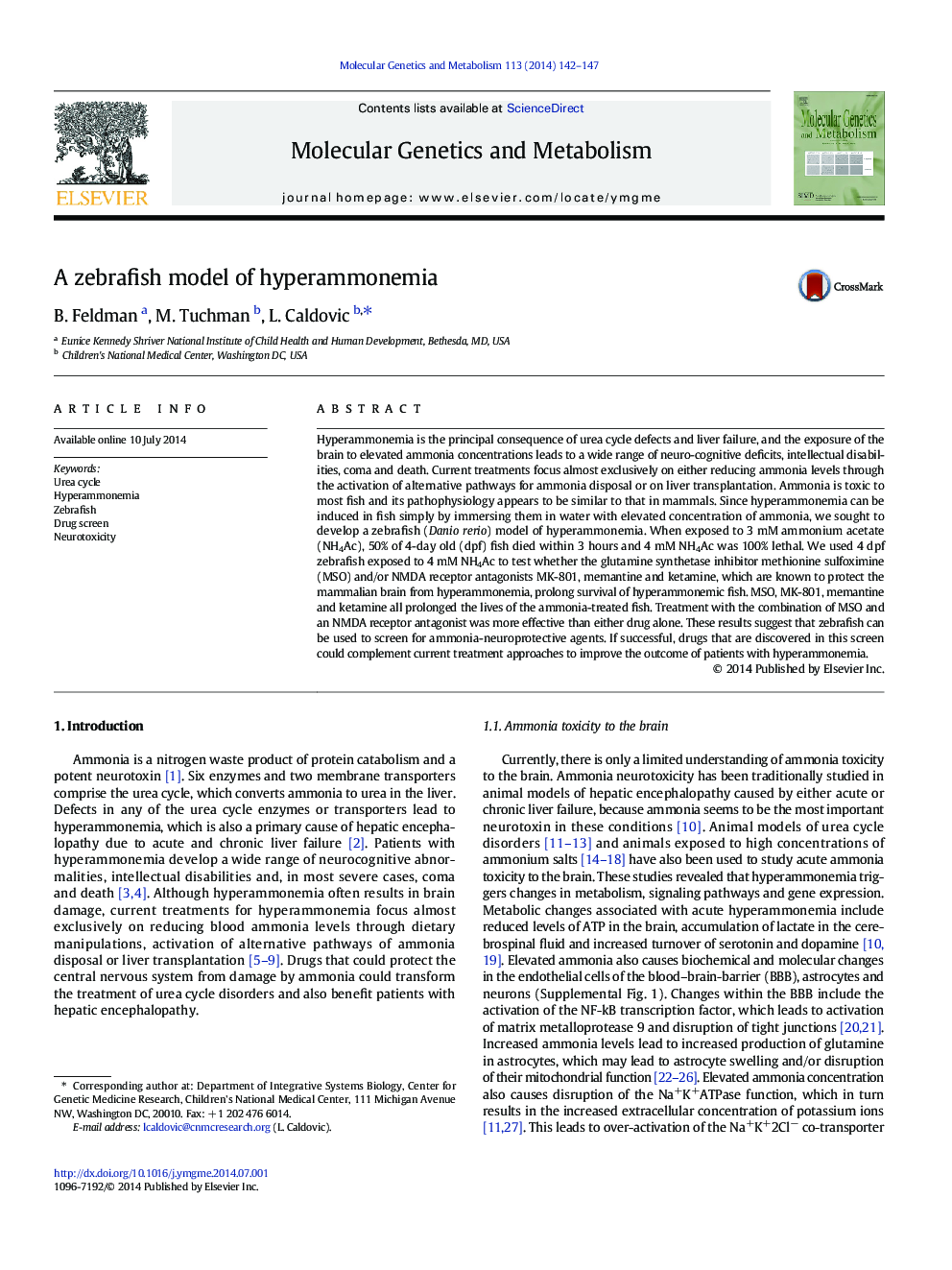| کد مقاله | کد نشریه | سال انتشار | مقاله انگلیسی | نسخه تمام متن |
|---|---|---|---|---|
| 8343906 | 1541560 | 2014 | 6 صفحه PDF | دانلود رایگان |
عنوان انگلیسی مقاله ISI
A zebrafish model of hyperammonemia
ترجمه فارسی عنوان
یک مدل سوپرا ماهی از هیپرامنمیسم
دانلود مقاله + سفارش ترجمه
دانلود مقاله ISI انگلیسی
رایگان برای ایرانیان
کلمات کلیدی
چرخه اوره هیپرامونمی، ماهی قزل آلا، صفحه نمایش مواد مخدر، عصبی عصبی،
موضوعات مرتبط
علوم زیستی و بیوفناوری
بیوشیمی، ژنتیک و زیست شناسی مولکولی
زیست شیمی
چکیده انگلیسی
Hyperammonemia is the principal consequence of urea cycle defects and liver failure, and the exposure of the brain to elevated ammonia concentrations leads to a wide range of neuro-cognitive deficits, intellectual disabilities, coma and death. Current treatments focus almost exclusively on either reducing ammonia levels through the activation of alternative pathways for ammonia disposal or on liver transplantation. Ammonia is toxic to most fish and its pathophysiology appears to be similar to that in mammals. Since hyperammonemia can be induced in fish simply by immersing them in water with elevated concentration of ammonia, we sought to develop a zebrafish (Danio rerio) model of hyperammonemia. When exposed to 3Â mM ammonium acetate (NH4Ac), 50% of 4-day old (dpf) fish died within 3Â hours and 4Â mM NH4Ac was 100% lethal. We used 4Â dpf zebrafish exposed to 4Â mM NH4Ac to test whether the glutamine synthetase inhibitor methionine sulfoximine (MSO) and/or NMDA receptor antagonists MK-801, memantine and ketamine, which are known to protect the mammalian brain from hyperammonemia, prolong survival of hyperammonemic fish. MSO, MK-801, memantine and ketamine all prolonged the lives of the ammonia-treated fish. Treatment with the combination of MSO and an NMDA receptor antagonist was more effective than either drug alone. These results suggest that zebrafish can be used to screen for ammonia-neuroprotective agents. If successful, drugs that are discovered in this screen could complement current treatment approaches to improve the outcome of patients with hyperammonemia.
ناشر
Database: Elsevier - ScienceDirect (ساینس دایرکت)
Journal: Molecular Genetics and Metabolism - Volume 113, Issues 1â2, SeptemberâOctober 2014, Pages 142-147
Journal: Molecular Genetics and Metabolism - Volume 113, Issues 1â2, SeptemberâOctober 2014, Pages 142-147
نویسندگان
B. Feldman, M. Tuchman, L. Caldovic,
